Continuing our post-draft film study on the Detroit Lions’ draft class, let’s take a closer look at tight end Sam LaPorta, the team’s second-round selection out of Iowa.
▶ Games watched: vs. Michigan (Oct. 1), @Illinois (Oct. 8), @Ohio State (Oct. 22), @Purdue (Nov. 5), @Minnesota (Nov. 19), vs. Kentucky (Dec. 31)
▶ Statistics: 2019: 12 games, two starts, 15 catches for 188 yards, zero touchdowns
2020: Eight games, five starts, 27 receptions, 271 yards, one touchdown
2021: 14 games, 13 starts, 53 receptions, 670 yards, three touchdowns
2022: 12 games, 12 starts, 58 receptions, 657 yards, one touchdown
▶ Durability: Highly durable prospect. LaPorta missed one game as a freshman because of an unknown injury and was sidelined for the final game of the 2022 regular season, after requiring surgery for a torn meniscus.
▶ Athletic profile: LaPorta is a high-end athlete, who recorded 90th-percentile measurements for his position in the broad jump, 40-yard dash and 3-cone drill, highlighting his combination of speed, explosion and agility. His 10-yard split, which is one of the better precursors to professional success, was 98th percentile. What’s sacrificed is functional upper-body strength. His 16 reps in the bench press are well-below average for a tight end.
▶ Usage: Lions general manager Brad Holmes noted LaPorta’s positional flexibility after making the selection. At Iowa, LaPorta was most frequently attached to the formation, showing no preference for one side over the other, while seeing reps both on the line of scrimmage and offset from the tackle, in more of an H-back alignment.
Because of his athleticism and receiving ability, he also saw plenty of work detached from the formation, playing up to 30 snaps per game either in the slot or out wide, typically with a slight lean for slot reps.
Interestingly, LaPorta went into Iowa’s bowl game last year as the team’s emergency quarterback. And while he wasn’t needed, the team did give him a late-game series as a wildcat QB.
LaPorta’s special-teams usage was limited to blocking for field goals and extra points as a senior. Earlier in his college career, he also saw action as a blocker on kick returns.
▶ Receiving: LaPorta runs a relatively-full route tree from his various spots on the field. He operates across the middle of the field, running slants and crossers from his in-line and slot alignments, but will also reverse back out toward the sideline, regularly running an escape pattern.
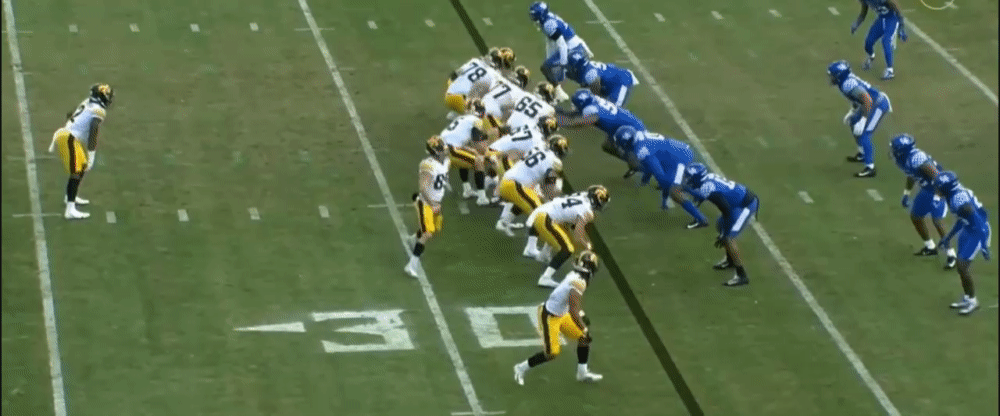
While not a specialty, he does have the speed, size and hands to run vertical patterns, both in the seam and down the sideline. And he showed a high-level ability running middle-field screens, which allowed him to use his athleticism and tackle avoidance to rack up yards after the catch.
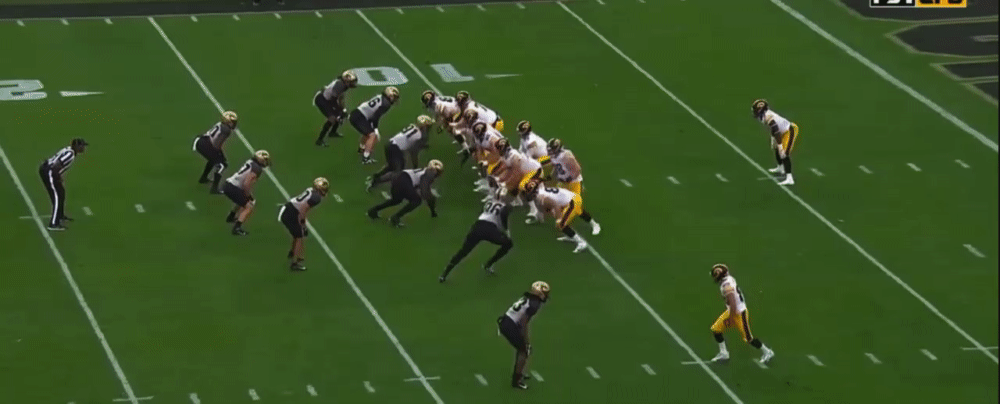
LaPorta shows good feel with his route running. He’s able to shake a linebacker and most defensive backs with surprisingly quick footwork, releasing at the line of scrimmage, and he uses his size to his advantage when pressed or closing a cushion against off-man coverage, physically playing through the contact to create separation. And one thing Lions fans will love is his ability to stay on his feet after the catch.
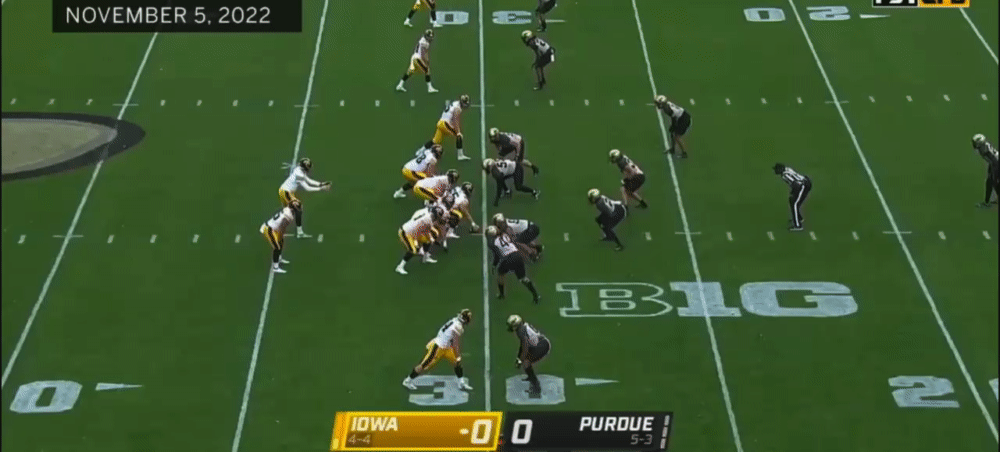
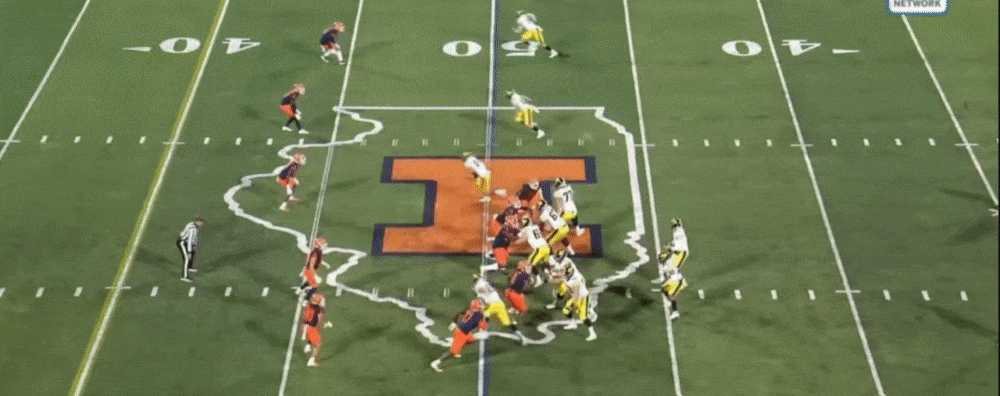
Iowa also frequently used him on delayed-release patterns, where he would block at the snap before breaking off into a short route, often into the flat, working in conjunction with a designed rollout.

There’s a surprising number of drops on the resume. According to Pro Football Focus, LaPorta put 10.2% of his targets on the ground in 2022 and 9.2% throughout his career. We say surprising because that didn’t show up in the six games we watched, at all. LaPorta showed good concentration in these contests, catching the ball with strong hands away from his frame. He also showed the ability to make catches in traffic, through contact.

His biggest strength might be after the catch. In space, he’s able to showcase his elite burst and speed for the position, but he’s also a tough tackle, able to juke a defender in the open field and bounce off a hit. He averaged 6.0 yards after the catch last season, forcing 14 missed tackles.
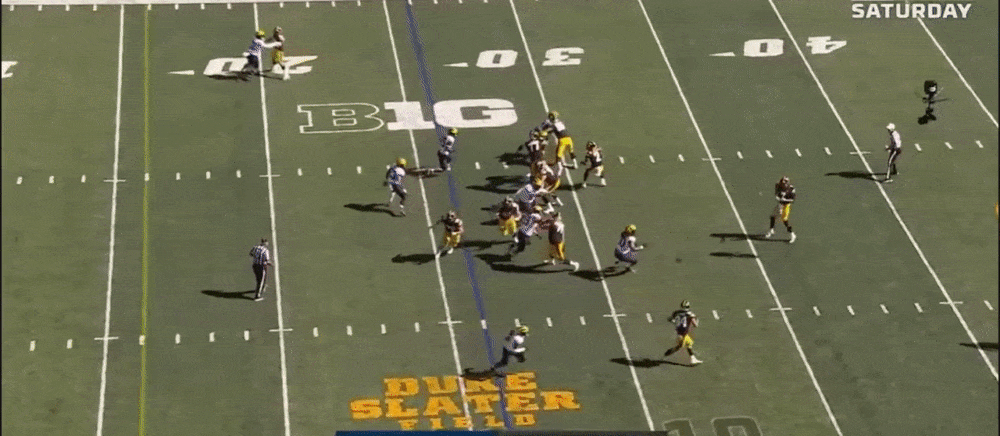
▶ Blocking: Our perceptions changed the more film we watched. We started with the bowl game against Kentucky and it couldn’t have been a much more brutal performance. At the defensive line, he was knocked back, in the second level, linebackers and safeties showed little issue avoiding him, and on a pull around the edge, he whiffed badly enough to make you have Eric Ebron flashbacks.

There’s a number of potential reasons why the performance was so poor, headlined by a long layoff, made worse by his recovery from the torn meniscus during the break. So, it’s understandable both timing and strength were disrupted.
What we saw in the remaining five in-conference contests was a consistent willingness and an adequate ability to get in the way of his assignment.
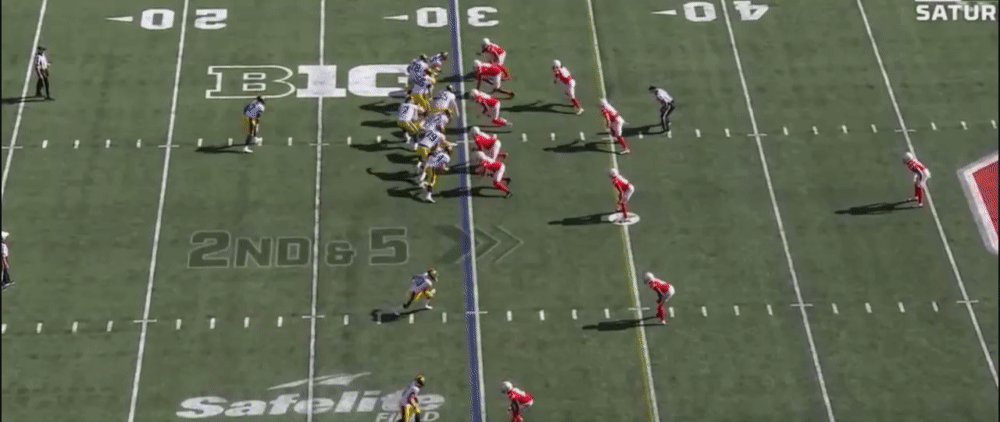
Clearly, at 245 pounds, he’s not going to be a guy who locks into the shoulder pads of a linebacker, drives him back 8 yards before putting the defender in the dirt. That’s not LaPorta’s game. Still, he can effectively seal on the backside against similar-sized defenders, lead on a pull block with athleticism and put a body on a second-level target, and work combos to pin a defensive end inside on run plays his direction.
▶ Conclusion: There’s a lot to like about LaPorta’s game, particularly as a pass-catcher. I wouldn’t expect the Lions to utilize him in-line as frequently as he was in Iowa, but there’s still mismatch value in those alignments, particularly on the delayed release routes off of chip blocks, which the Lions successfully used with receivers Amon-Ra St. Brown and Josh Reynolds last season.
Ideally, you want to find ways to get LaPorta in space to use his speed and open-field agility. The Lions showed a willingness to work the ball to the position on screen passes with T.J. Hockenson and should continue to do so with LaPorta. You can also trust him to beat a linebacker and stiffer safeties one-on-one from either an attached or detached pre-snap alignment, which could make him a nice secondary weapon on third downs to complement St. Brown.
Detroit will need to be smart with how they deploy LaPorta as a blocker. He shouldn’t be tasked with slowing down NFL defense ends one-on-one. He simply doesn’t have the length or strength to consistently compete in those situations. There is plenty of potential as an in-line pull blocker, but he’ll need better consistency with his angles and technique to maximize his ability.
With development, LaPorta could be a premium flex tight end with a floor similar to former Ram and current Seahawk Gerald Everett, and production ceiling slightly higher than we saw from Evan Engram in Jacksonville last season (73 catches, 766 yards, four touchdowns).
jdrogers@detroitnews.com
Twitter: @Justin_Rogers